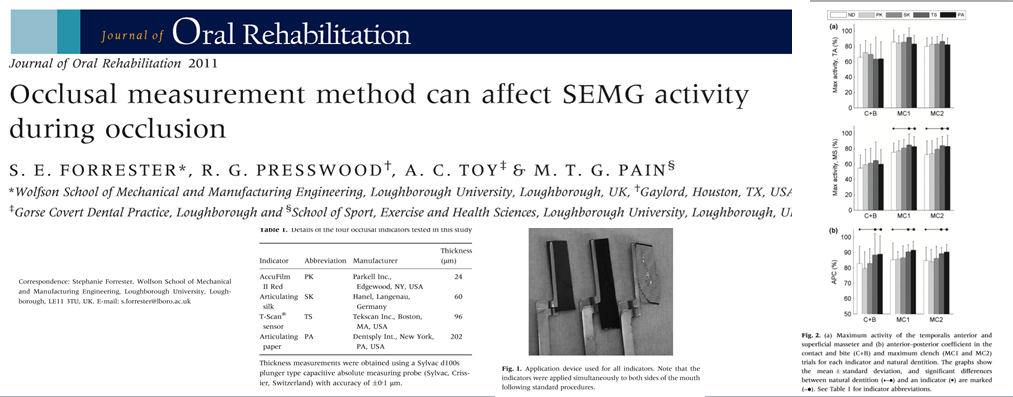The occlusal indicators may alter the performance of the masticatory muscles.
The occlusal indicators are widespread in dental clinics to evaluate the distribution of the contacts between the dental arches. Often the distribution, number and highlighted contact area are used as an estimate of the “quality” of the occlusion itself. Researchers at the University of Loughborough (S. Forrester, RG, Presswood, AC Toy, MTG Pain) (UK) evaluated the performance of the masticatory muscles with and without occlusal indicators interposed between the arches. They have been assessed 4 types of occlusal indicators respectively of 24, 60, 96 and 202 µm thick. To numerically quantify muscle activation, Temporal and Masseter muscles electromyographic measurements were performed applying standardization procedures. sEMG standardized indexes have shown that exclusively indicators of 24 and 60 um thick did not cause significant changes in the masticatory muscles recruitment. The authors concluded as how occlusal indicators can alter the performance of the masticatory muscles then affect the measurement they provide (assuming the idea that muscle recruitment is one of the factors that determine the position of the jaw then so the occlusion. Editor’s notes).

